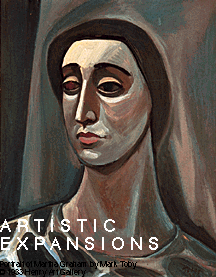

Over the years, the Henry has become one of the most prominent galleries in the Pacific Northwest, attracting more than 60,000 visitors a year despite only having 5,000 square feet for exhibitions. Since its inception, it was best known for progressive exhibition programs--its noted 1928 exhibition featuring works by the "Blue Four" (Feininger, Jawlensky, Kandinsky and Klee) was recognized as the first significant exhibition of modern art in Seattle.

The state contributed $8.6 million over the past three years. Support for the Henry Gallery Association's capital campaign--headed by UW Regent Sam Stroum and William True, president of the Henry Gallery Association Board of Trustees--was so strong that the campaign surpassed its goal of $23 million and raised its sights to $25 million.
The new Henry features renovated gallery space to properly present the museum's permanent collection for the first time; new galleries to accommodate installations of contemporary art on an ongoing basis; improved storage and handling facilities; a 154-seat auditorium; a cafe; an academic research center; and studio space for school groups.

Gwathmey says the design "originates from the recognition of the existing building as a found object" and creates a "compositional whole by the addition of the new architectural form." Using glass, buff cast-stone panels, board-formed concrete and textured stainless steel on the addition provides a dramatic visual contrast to the monumental red-brick architecture of the neighboring academic buildings.

Visitors entering the new main door have their choice: head down a bridge of stairs into the original building, whose galleries will display the Henry permanent collection; take a cantilevered stairwell to the new cafe and study area for the museum's collection of prints and drawings; or stroll past the stairwell to a wide passage overlooking the double-height East Gallery -- and taking you to the entrance of the South Gallery, where temporary exhibitions will be on display.
Send a letter to the editor at columns@u.washington.edu.